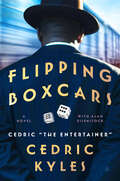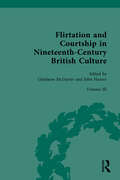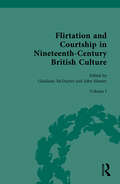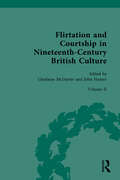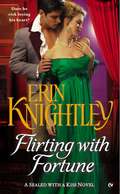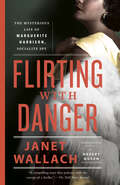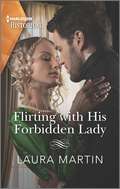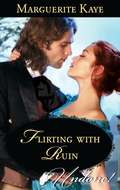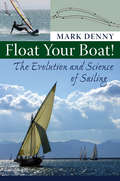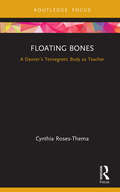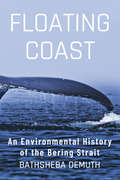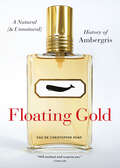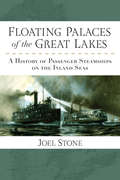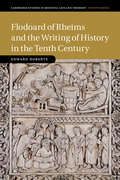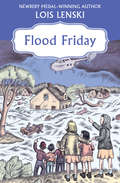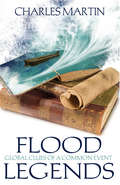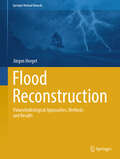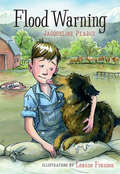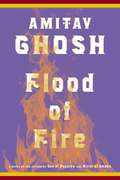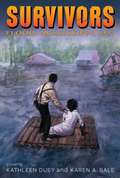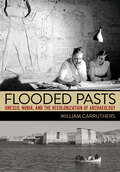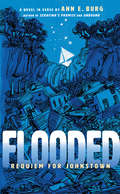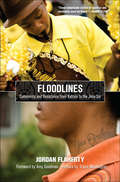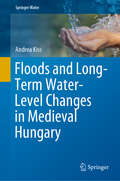- Table View
- List View
Flipping Boxcars: A Novel
by Cedric The EntertainerThe first novel from one of the original Kings of Comedy, Cedric “The Entertainer,” an engaging and entertaining crime caper that is a valentine to close-knit black families and tightly woven communities struggling to get by during the Depression and World War II. Babe is a charismatic and widely loved man, a gambler with a gift for gab that often gets him out of tricky situations. He’s also a dreamer, something he shares with his patient and loving wife, Rosie. They both yearn for financial stability and see the land they own as insurance for future generations. But when Babe and a few comrades enlist in a scheme that improbably falls apart, he endangers the little security the family has. On the verge of losing everything, what’s a family man to do?If you’re a gambler like Babe, you double down and risk it all for one big score—this time, a plan involving railroad boxcars.Will Babe succeed? Will Rosie continue to support her husband? Are the Feds on to his make-or-break scheme?Flipping Boxcars is Cedric “The Entertainer” at his most engaging best—a charming, fast-paced novel that pays homage to his beloved grandfather and a generation past, anchored by rich, multi-dimensional characters and oozing with irresistible charm.
Flirtation and Courtship in Nineteenth-Century British Culture
by John Hunter Ghislaine McDayterThis is volume three of a three-volume set that brings together a rich collection of primary source materials on flirtation and courtship in the nineteenth-century. Introductory essays and extensive editorial apparatus offer historical and cultural contexts of the materials included Throughout the long nineteenth-century, a woman’s life was commonly thought to fall into three discrete developmental stages; personal formation and a gendered education; a young woman’s entrance onto the marriage market; and finally her emergence at the apogee of normative femininity as wife and mother. In all three stages of development, there was an unspoken awareness of the duplicity at the heart of this carefully cultivated femininity. What women were taught, no matter their age, was that if you desired anything in life, it behooved you to perform indifference. This meant that for women, the art of flirtation and feigning indifference were viewed as essential survival skills that could guarantee success in life. These three volumes document the many ways in which nineteenth-century women were educated in this seemingly universal wisdom, but just as frequently managed to manipulate, subvert, and navigate their way through such proscribed norms to achieve their own desires. Presenting a wide range of documents from novels, memoirs, literary journals, newspapers, plays, poetry, songs, parlour games, and legal documents, this collection will illuminate a far more diverse set of options available to women in their quest for happiness, and a new understanding of the operations of courtship and flirtation, the "central" concerns of a nineteenth-century woman’s life. The volumes will be of interest to scholars of history, literature, gender and cultural studies, with an interest in the nineteenth-century.
Flirtation and Courtship in Nineteenth-Century British Culture
by John Hunter Ghislaine McDayterThis is volume one of a three-volume set that brings together a rich collection of primary source materials on flirtation and courtship in the nineteenth-century. Introductory essays and extensive editorial apparatus offer historical and cultural contexts of the materials included Throughout the long nineteenth-century, a woman’s life was commonly thought to fall into three discrete developmental stages; personal formation and a gendered education; a young woman’s entrance onto the marriage market; and finally her emergence at the apogee of normative femininity as wife and mother. In all three stages of development, there was an unspoken awareness of the duplicity at the heart of this carefully cultivated femininity. What women were taught, no matter their age, was that if you desired anything in life, it behooved you to perform indifference. This meant that for women, the art of flirtation and feigning indifference were viewed as essential survival skills that could guarantee success in life. These three volumes document the many ways in which nineteenth-century women were educated in this seemingly universal wisdom, but just as frequently managed to manipulate, subvert, and navigate their way through such proscribed norms to achieve their own desires. Presenting a wide range of documents from novels, memoirs, literary journals, newspapers, plays, poetry, songs, parlour games, and legal documents, this collection will illuminate a far more diverse set of options available to women in their quest for happiness, and a new understanding of the operations of courtship and flirtation, the "central" concerns of a nineteenth-century woman’s life. The volumes will be of interest to scholars of history, literature, gender and cultural studies, with an interest in the nineteenth-century.
Flirtation and Courtship in Nineteenth-Century British Culture
by John Hunter Ghislaine McDayterThis is volume two of a three-volume set that brings together a rich collection of primary source materials on flirtation and courtship in the nineteenth-century. Introductory essays and extensive editorial apparatus offer historical and cultural contexts of the materials included Throughout the long nineteenth-century, a woman’s life was commonly thought to fall into three discrete developmental stages; personal formation and a gendered education; a young woman’s entrance onto the marriage market; and finally her emergence at the apogee of normative femininity as wife and mother. In all three stages of development, there was an unspoken awareness of the duplicity at the heart of this carefully cultivated femininity. What women were taught, no matter their age, was that if you desired anything in life, it behooved you to perform indifference. This meant that for women, the art of flirtation and feigning indifference were viewed as essential survival skills that could guarantee success in life. These three volumes document the many ways in which nineteenth-century women were educated in this seemingly universal wisdom, but just as frequently managed to manipulate, subvert, and navigate their way through such proscribed norms to achieve their own desires. Presenting a wide range of documents from novels, memoirs, literary journals, newspapers, plays, poetry, songs, parlour games, and legal documents, this collection will illuminate a far more diverse set of options available to women in their quest for happiness, and a new understanding of the operations of courtship and flirtation, the "central" concerns of a nineteenth-century woman’s life. The volumes will be of interest to scholars of history, literature, gender and cultural studies, with an interest in the nineteenth-century.
Flirting With Fortune (A Sealed with a Kiss Novel #3)
by Erin KnightleyAN HONEST DECEPTION Sir Colin Tate has never imagined marrying for money. But debts left by his artist father have put his siblings' futures in danger. To wed an eligible heiress, this independent-minded Scot must play by restrictive rules--until an irresistible lady dares to pursue her passion for art...and him. AN UNEXPECTED DESIRE Lady Beatrice Moore can spy a fortune hunter as expertly as she captures subjects on canvas. But when she meets the striking son of Britain's most celebrated painter, the attraction is instantaneous--blinding her to the possibility that he could ever be one of those schemers.... AN UNTHINKABLE DILEMMA Then the truth comes out, shattering Lady Beatrice's faith in the mischievous yet kind man who has captured her heart. With reputations and fortunes hanging in the balance, Colin and she must find a way to trust in a love that cannot be proven--or face an unfathomable loss.
Flirting with Danger: The Mysterious Life of Marguerite Harrison, Socialite Spy
by Janet WallachA NEW YORK TIMES EDITOR'S CHOICE"A compelling story that pulsates with the energy of a thriller"—The Wall Street Journal"Suspense, élan and a generous helping of glamour: Think George Smiley in a mink-trimmed coat."—The New York Times Book ReviewThe true story of socialite Marguerite Harrison, who spied for U.S. military intelligence in Russia and Germany in the fraught period between the world warsBorn a privileged child of America&’s Gilded Age, Marguerite Harrison rebelled against her mother&’s ambitions, married the man she loved, was widowed at thirty-seven, and set off on a life of adventure. Hired as a society reporter, when America entered World War I she applied to Military Intelligence to work as a spy.She arrived in Berlin immediately after the Armistice and befriended the enemy, dining with aristocrats and dancing with socialists. Late into the night she wrote prescient reports on the growing power of the German right. Sent to Moscow, she sneaked into Russia to observe the results of the Bolshevik Revolution. Although she carried press credentials she was caught and imprisoned as an American spy. Terrified when told her only way out was to spy for the Cheka, she became a double agent, aiming to convince the Russian rulers she was working for them while striving to stay loyal to her country.In Germany and Russia, Harrison saw the future—a second war with Germany, a cold war with the Soviets—but her reports were ignored by many back home. Over a decade, Harrison&’s mysterious adventures took her to Europe, Baghdad, and the Far East, as a socialite, secret agent, and documentary filmmaker. Janet Wallach captures Harrison&’s daring and glamour in this stranger-than-fiction history of a woman drawn to the impossible.
Flirting with His Forbidden Lady: A Regency Family is Reunited (The Ashburton Reunion #1)
by Laura MartinReturning from IndiaTo a forbidden liaison…Joshua Ashburton hasn’t seen his brother for years and heads straight to his London town house. A ball is underway filled with the cream of society, including one Lady Elizabeth Hummingford. Captivated by her vitality and sparkle, he’s shocked to learn she’s all but engaged to his brother! It’s a loveless, convenient match, but how can Josh persuade her she’s chosen the wrong brother when he’s set to return abroad?From Harlequin Historical: Your romantic escape to the past.The Ashburton ReunionTwo estranged brothers find each other and two special women to love!Book 1: Flirting with His Forbidden Lady
Flirting with Ruin
by Marguerite KayeLady Rosalind Rhees has dedicated her life to being as scandalous as possible-it's the only way she can escape society's expectations. Unfortunately, flirting with ruin hasn't been as exciting as she'd hoped. Until she meets Major Fraser Lennox at a country party-and gets a taste of just how delicious forbidden desire can feel... But is she daring enough to follow her heart on the strength of one sizzling night?
Float Your Boat!: The Evolution and Science of Sailing
by Mark DennyAn estimated 4.1 million people in the United States participate in recreational sailing. Yet the large library of sailing literature leaves many of them high and dry. On one side are technical guides for America’s Cup boat-builders; on the other, simplistic books for weekend sailors with little interest in science. In Float Your Boat! professional and amateur boaters alike will find intelligent and understandable answers to such questions as: What were the key innovations that made sailboats more efficient? How do you increase the speed of a boat? How do sailboats travel into the wind? Why are so many explanations of sailing so wrong? Sailing enthusiast and physicist Mark Denny first traces the evolution of the sailing craft, from prehistoric coracles made of animal skins and antlers to the sailboat’s reinvention as a pleasure craft during the Industrial Revolution. He then identifies specific sailing phenomena—how wind drives modern Bermuda sloops, how torque determines stability, why hull speed exists—and provides the key physics principles behind them. Whether you are an inquisitive landlubber who has never set foot in a boat, a casual weekend sailor, or an old salt who lives for the sea, Float Your Boat! is an accessible guide to the physics of sailing.
Floating Bones: A Dancer's Tensegretic Body as Teacher
by Cynthia Roses-ThemaFloating Bones charts the author’s journey into tensegrity, which begins in ballet and culminates in a model for addressing one’s body as a teacher. Tensegrity flips traditional biomechanical models such that instead of support coming from the bones, the bones float, and it is the muscles and other soft connective tissue that provide support for the moving body. Using the model of tensegretic experience, Roses-Thema connects somatics, cognition, rhetoric, and reflective practices detailing the means that constructed approaching the body as a teacher. This study presents the argument for extending the models of thinking to include bodily thinking, by citing how the experiential perspective of tensegrity constructs physical evidence of the rhetorical concept, metis, where the body thinks as it moves. This book will be of great interest to students, scholars, and practitioners of dance, theater, and sociology.
Floating Coast: An Environmental History Of The Bering Strait
by Bathsheba DemuthA groundbreaking exploration of the relationship between capitalism, communism, and Arctic ecology since the dawn of the industrial age. Whales and walruses, caribou and fox, gold and oil: through the stories of these animals and resources, Bathsheba Demuth reveals how people have turned ecological wealth in a remote region into economic growth and state power for more than 150 years. The first-ever comprehensive history of Beringia, the Arctic land and waters stretching from Russia to Canada, Floating Coast breaks away from familiar narratives to provide a fresh and fascinating perspective on an overlooked landscape. The unforgiving territory along the Bering Strait had long been home to humans—the Inupiat and Yupik in Alaska, and the Yupik and Chukchi in Russia—before Americans and Europeans arrived with revolutionary ideas for progress. Rapidly, these frigid lands and waters became the site of an ongoing experiment: How, under conditions of extreme scarcity, would the great modern ideologies of capitalism and communism control and manage the resources they craved? Drawing on her own experience living with and interviewing indigenous people in the region, as well as from archival sources, Demuth shows how the social, the political, and the environmental clashed in this liminal space. Through the lens of the natural world, she views human life and economics as fundamentally about cycles of energy, bringing a fresh and visionary spin to the writing of human history. Floating Coast is a profoundly resonant tale of the dynamic changes and unforeseen consequences that immense human needs and ambitions have brought, and will continue to bring, to a finite planet.
Floating Gold: A Natural (& Unnatural) History of Ambergris
by Christopher KempA fascinating natural history of an incredibly curious substance. “Preternaturally hardened whale dung” is not the first image that comes to mind when we think of perfume, otherwise a symbol of glamour and allure. But the key ingredient that makes the sophisticated scent linger on the skin is precisely this bizarre digestive by-product—ambergris. Despite being one of the world’s most expensive substances (its value is nearly that of gold and has at times in history been triple it), ambergris is also one of the world’s least known. But with this unusual and highly alluring book, Christopher Kemp promises to change that by uncovering the unique history of ambergris. A rare secretion produced only by sperm whales, which have a fondness for squid but an inability to digest their beaks, ambergris is expelled at sea and floats on ocean currents for years, slowly transforming, before it sometimes washes ashore looking like a nondescript waxy pebble. It can appear almost anywhere but is found so rarely, it might as well appear nowhere. Kemp’s journey begins with an encounter on a New Zealand beach with a giant lump of faux ambergris—determined after much excitement to nothing more exotic than lard—that inspires a comprehensive quest to seek out ambergris and its story. He takes us from the wild, rocky New Zealand coastline to Stewart Island, a remote, windswept island in the southern seas, to Boston and Cape Cod, and back again. Along the way, he tracks down the secretive collectors and traders who populate the clandestine modern-day ambergris trade.Floating Gold is an entertaining and lively history that covers not only these precious gray lumps and those who covet them, but presents a highly informative account of the natural history of whales, squid, ocean ecology, and even a history of the perfume industry. Kemp’s obsessive curiosity is infectious, and eager readers will feel as though they have stumbled upon a precious bounty of this intriguing substance.
Floating Palaces Of The Great Lakes: A History Of Passenger Steamships On The Inland Seas
by Joel StoneThrough much of the nineteenth century, steam-powered ships provided one of the most reliable and comfortable transportation options in the United States, becoming a critical partner in railroad expansion and the heart of a thriving recreation industry. The aesthetic, structural, and commercial peak of the steamboat era occurred on the Great Lakes, where palatial ships created memories and livelihoods for millions while carrying passengers between the region's major industrial ports of Chicago, Milwaukee, Detroit, Cleveland, Buffalo, and Toronto. By the mid-twentieth century, the industry was in steep decline, and today North America's rich and entertaining steamboat heritage has been largely forgotten. In Floating Palaces of the Great Lakes, Joel Stone revisits this important era of maritime history, packed with elegance and adventure, politics and wealth, triumph and tragedy. This story of Great Lakes travelers and the beautiful floating palaces they engendered will engage historians and history buffs alike, as well as genealogists, regionalists, and researchers.
Flodoard of Rheims and the Writing of History in the Tenth Century (Cambridge Studies in Medieval Life and Thought: Fourth Series #113)
by Edward RobertsFlodoard of Rheims (893/4–966) is one of the tenth century's most intriguing but neglected historians. His works are essential sources for the emergence of the West Frankish and Ottonian kingdoms in the tumultuous decades following the collapse of the Carolingian empire in 888. Yet although Flodoard is a crucial narrative voice from this period, his works have seldom been considered in the context of the evolving circumstances of his turbulent career or his literary aims. This important new study is the first to analyse and synthesise Flodoard's entire output, suggesting that his writings about Rheims, contemporary politics and the Christian past have until now been taken at face value without regard for his own intentions or priorities, and therefore have been misunderstood. Edward Roberts' re-evaluation of the relationship between political participation, historical understanding and authorial individuality casts important new light on the political and cultural history of tenth-century Europe.
Flood Friday
by Lois LenskiWill Sally and her family ever be able to go home?When heavy rains cause the river to flood, Sally, her family, and many of their neighbors have to evacuate their homes. With nothing but the clothes on their backs, they seek shelter at the local school. At first, it seems like an adventure, but as reports come in of whole houses being washed away, Sally learns the meaning of being a true friend and a good neighbor. Flood Friday is based on the actual flooding of western Connecticut in 1955. This ebook features an illustrated biography of Lois Lenski including rare images and never-before-seen documents from the author&’s estate.
Flood Friday
by Lois LenskiWill Sally and her family ever be able to go home?When heavy rains cause the river to flood, Sally, her family, and many of their neighbors have to evacuate their homes. With nothing but the clothes on their backs, they seek shelter at the local school. At first, it seems like an adventure, but as reports come in of whole houses being washed away, Sally learns the meaning of being a true friend and a good neighbor. Flood Friday is based on the actual flooding of western Connecticut in 1955. This ebook features an illustrated biography of Lois Lenski including rare images and never-before-seen documents from the author&’s estate.
Flood Legends
by Charles MartinThe story of the Deluge - or the Global Flood of Noah - permeates nearly every culture in the world in some way, shape, or form. While details vary between the different cultures, the same basic elements, occur in all versions. In "Flood Legends" you will discover: Detailed analysis of myth, legend, and historical details that are clues for a common, global event Unique research from a comparative study supporting the biblical history Despite the striking similarities of these accounts, some mythologists have looked at the minor differences in the stories and declared: "This never happened!" There is another alternative - to accept that the different versions all refer to the same event - passed on from generation to generation, through various developing cultures. Through these legends, this epic event has remained woven into the tapestry of cultural history - sharing not just the story of survival, but the power of obedience, and the fulfillment of God's enduring promise.
Flood Reconstruction: Palaeohydrological Approaches, Methods and Results (Springer Natural Hazards)
by Jürgen HergetFloods are among the most common and consequential natural disasters on Earth, occurring in all natural areas at all times. Yet, they often surprise us with their unexpected magnitude and the damage they cause. Terms like century and millennium floods quickly become widespread, but what do we really know about the floods of the past? How can we truly classify events like the Mississippi flood of 1993, the Elbe flood of 2002, or the Pakistan flood of 2010? Have such floods occurred before, or are they unprecedented, perhaps even consequences of ongoing climate change? To answer these questions, we must look into the past. However, river level records are often limited in duration, rarely extending back more than a hundred years, and many regions lack any measured values at all. Nonetheless, floods have left their marks. These marks may exist in the form of historical records and descriptions, which vary in extent across different cultural contexts. In addition to historical records, natural indicators like deposited sediments or erosion traces provide valuable information about past flood levels. This is particularly important for prehistoric periods and for regions without dense settlements and related gauges. These investigations lead to further questions about maximum flood levels and the earliest recorded observations. This book addresses these questions by exploring the reconstruction of floods from both historical and prehistoric times. It explains and discusses methods and results for beginners with diverse backgrounds in disciplines such as earth sciences, hydrology, history, and engineering. Extensive and carefully selected reference lists offer access to additional information.
Flood Warning (Orca Echoes)
by Jacqueline Pearce Leanne FransonTom loves running through cow fields with his best friend, Peggy, and his dog, Amos—especially when he's pretending to be his favorite radio hero, the Lone Ranger. But when Tom learns the nearby Fraser River is about to flood, he may have to become a real-life hero and help save his family's herd of dairy cows. This story is based on real events that happened in the farming community of Agassiz during the Fraser River flood of 1948.
Flood of Fire (Ibis #3)
by Amitav GhoshThe stunningly vibrant final novel in the bestselling Ibis Trilogy<P><P> It is 1839 and China has embargoed the trade of opium, yet too much is at stake in the lucrative business and the British Foreign Secretary has ordered the colonial government in India to assemble an expeditionary force for an attack to reinstate the trade. Among those consigned is Kesri Singh, a soldier in the army of the East India Company. He makes his way eastward on the Hind, a transport ship that will carry him from Bengal to Hong Kong.<P> Along the way, many characters from the Ibis Trilogy come aboard, including Zachary Reid, a young American speculator in opium futures, and Shireen, the widow of an opium merchant whose mysterious death in China has compelled her to seek out his lost son. The Hind docks in Hong Kong just as war breaks out and opium "pours into the market like monsoon flood." From Bombay to Calcutta, from naval engagements to the decks of a hospital ship, among embezzlement, profiteering, and espionage, Amitav Ghosh charts a breathless course through the culminating moment of the British opium trade and vexed colonial history.<P> With all the verve of the first two novels in the trilogy, Flood of Fire completes Ghosh's unprecedented reenvisioning of the nineteenth-century war on drugs. With remarkable historic vision and a vibrant cast of characters, Ghosh brings the Opium Wars to bear on the contemporary moment with the storytelling that has charmed readers around the world.
Flood: Mississippi, 1927 (Survivors #5)
by Kathleen Duey Karen A. BaleA rushing river with rapidly rising waters threatens the lives—and life savings—of two resourceful kids in this thrilling tale of historical fiction, part of the Survivors series.For years, Garret and Molly have dreamed of seeing more of the world than cotton fields and the dusty poverty of their Mississippi Delta farms. They’ve been stashing away hard-earned pennies and nickels in a tin-can bank, hidden deep in the bayou. Now rising flood waters threaten the hiding place of their money, and they set out on their homemade raft to retrieve it. But the raging Mississippi has other plans, and suddenly Garrett and Molly find themselves in a deadly battle with the dangerous currents and roiling rapids of their debris-strewn river—fighting not for their life savings, but for their lives.
Flooded Pasts: UNESCO, Nubia, and the Recolonization of Archaeology
by William CarruthersFlooded Pasts examines a world famous yet critically underexamined event—UNESCO's International Campaign to Save the Monuments of Nubia (1960–80)—to show how the project, its genealogy, and its aftermath not only propelled archaeology into the postwar world but also helped to "recolonize" it. In this book, William Carruthers asks how postwar decolonization took shape and what role a colonial discipline like archaeology—forged in the crucible of imperialism—played as the "new nations" asserted themselves in the face of the global Cold War.As the Aswan High Dam became the centerpiece of Gamal Abdel Nasser's Egyptian revolution, the Nubian campaign sought to salvage and preserve ancient temples and archaeological sites from the new barrage's floodwaters. Conducted in the neighboring regions of Egyptian and Sudanese Nubia, the project built on years of Nubian archaeological work conducted under British occupation and influence. During that process, the campaign drew on the scientific racism that guided those earlier surveys, helping to consign Nubians themselves to state-led resettlement and modernization programs, even as UNESCO created a picturesque archaeological landscape fit for global media and tourist consumption. Flooded Pasts describes how colonial archaeological and anthropological practices—and particularly their archival and documentary manifestations—created an ancient Nubia severed from the region's population. As a result, the Nubian campaign not only became fundamental to the creation of UNESCO's 1972 World Heritage Convention but also exposed questions about the goals of archaeology and heritage and whether the colonial origins of these fields will ever be overcome.
Flooded: Requiem For Johnstown
by Ann E. Burg"Chillingly effective." -- Bulletin of the Center for Children's Books Johnstown, Pennsylvania, in 1889 was a lively, working-class factory city. Above the soot-soaked streets, an elite fishing and hunting club, built on a pristine man-made lake, drew America's wealthiest business barons. Though repeatedly urged to fix the deteriorating dam that held the lake, the club members disregarded the warnings. And when heavy rains came, the dam collapsed and plunged the city into chaos. On that fateful day, six children found themselves caught in the wreckage. The chorus of their voices--all inspired by real people--create a gripping portrait of loss and healing. Plumbing themes of class, injustice, deprivation, and the environment, Ann E. Burg summons her prodigious heart and virtuosic poetry to turn one of the deadliest tragedies in our country's history into a transcendent and hopeful work of art.
Floodlines: Community and Resistance from Katrina to the Jena Six
by Jordan FlahertyOrganizers, activists, artists and community members share their struggles in New Orleans before and after Hurricane Katrina.Floodlines is a firsthand account of community, culture, and resistance in New Orleans. The book weaves the stories of gay rappers, Mardi Gras Indians, Arab and Latino immigrants, public housing residents, and grassroots activists in the years before and after Katrina. From post-Katrina evacuee camps to torture testimony at Angola Prison to organizing with the family members of the Jena Six, Floodlines tells the stories behind the headlines from an unforgettable time and place in history.Praise for Floodlines“This is the most important book I’ve read about Katrina and what came after. In the tradition of Howard Zinn this could be called “The People’s History of the Storm.” Jordan Flaherty was there on the front lines.” —Eve Ensler, playwright of The Vagina Monologues, activist and founder of V-Day“Jordan Flaherty brings the sharp analysis and dedication of a seasoned organizer to his writing, and insightful observation to his reporting. He unfailingly has his ear to the ground in a city that continues to reveal the floodlines of structural racism in America.” —Tram Nguyen, author of We Are All Suspects Now: Untold Stories from Immigrant Communities after 9/11“Flaherty pulls no punches . . . . Readers will be compelled, depressed, disturbed, and angered by what they find in this well-written report. Crucial reading.” —Publishers Weekly, Starred Review
Floods and Long-Term Water-Level Changes in Medieval Hungary (Springer Water)
by Andrea KissThe book provides an overview of the floods and major hydrological changes that occurred in the medieval Hungarian kingdom (covering the majority of the Carpathian Basin) between 1000 and 1500 AD. The analysis was based on contemporary documentary evidence presented for the first time and the results of archaeological and scientific investigations. Beyond the evidence on individual flood events, the book includes a comprehensive overview of short-, medium-, and long-term changes detected in a hydrologically sensitive environment during the transition period between the Medieval Warm Period and the Little Ice Age. It also discusses the possible causes (including climate and human intervention) and the consequences for the physical and human environment, namely the related hydro-morphological changes, short- and long-term social response, and human perception issues.
